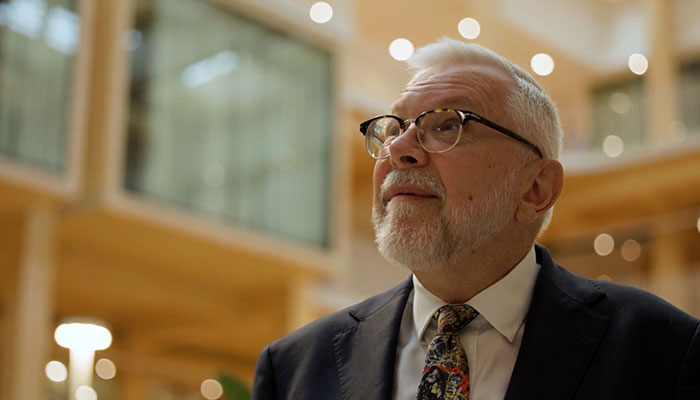For nearly 75 years, the Diagnostic and Statistical Manual of Mental Health (DSM) has been the go-to text for diagnosing mental health conditions.

But when two people can receive the same diagnosis despite not having a single symptom in common, Macquarie University Associate Professor of Psychology, Miri Forbes, says the system needs to be rethought.
As part of a new study, published in the journal Clinical Psychological Science, Associate Professor Forbes studied the symptoms and self-reported experiences of almost 15 000 people.
“To be diagnosed with major depressive disorder—sometimes called clinical depression—someone has to meet five out of the nine criteria listed in the DSM, including depressed mood or a loss of interest or pleasure in their usual activities,” she says.
“Because the criteria include examples like ‘weight loss or weight gain’ and ‘insomnia or hypersomnia’, there ends up being thousands of different symptom profiles that meet the diagnostic criteria.
“The foundation of the problem lies in the fact that DSM diagnoses are based on committee consensus and have not been generated in a systematic way.”
For example, the definition of attention deficit and hyperactivity disorder (ADHD) comes from efforts in education research to describe school students with hyperactive, restless and inattentive behaviour. Alzheimer’s disease is based on Dr Alois Alzheimer describing illness in his patient Auguste Deter. Other diagnoses like autism were based on observations by a clinician of a series of patients. Some, like major depressive disorder, draw on centuries of clinical observations.
The evidence is showing us that DSM diagnoses don’t line up well with how people experience those symptoms in the real world.
To complicate matters further, the DSM moves slowly. Emerging disorders can take many years to be formally included, and then once a disorder has been added it is very hard to remove it or make changes.
Associate Professor Forbes says with so much overlap between conditions, mental health professionals often settle on different diagnoses for the same patient.
There is also the muddying problem of comorbidity: Disorders co-occur at rates far greater than chance, and people often need multiple diagnostic labels to describe the symptoms they are experiencing.
“All of these problems combine to make it difficult not only to diagnose conditions accurately in the first place, but also to figure out what causes them and to develop more effective treatments.” she says.
“Many researchers now believe we’ve reached the point where the DSM is slowing our progress in these efforts. The evidence is showing us that DSM diagnoses don’t line up well with how people experience those symptoms in the real world.”
Exploring the alternatives
Over the last 15 years a variety of alternatives to the DSM have begun to gain traction.
One such alternative is the Hierarchical Taxonomy of Psychopathology (HiTOP), a framework that organises psychopathology using broad dimensions like “detachment”, “disinhibition” and “antagonism”. These dimensions can summarise someone’s symptom severity in each domain and, when combined, describe that person’s characteristic profile of thoughts, feelings and behaviours.

A new way forward: Associate Professor Miri Forbes is advocating for a data-driven approach to the diagnosis of mental health conditions.
Each broad domain can also be split into increasingly narrow dimensions, allowing clinicians to drill all the way down to a full, detailed profile of all of symptoms someone is experiencing.
The HiTOP framework has grown rapidly in popularity because it overcomes many of the limitations of the DSM and has strong research support.
However, HiTOP has its limitations, as a lot of its evidence base is still tied to DSM diagnoses, which remain the focus for most data collection efforts in mental health research.
HiTOP also currently spans only 71 of the diagnoses in the DSM, leaving out important domains like neurodevelopmental disorders and cognitive function.
- Walking to combat back pain: world-first study shows dramatic improvement
- Plant-based beef wins in the environmental stakes
To address the imperfections of both the DSM and HiTOP, Associate Professor Forbes and her colleagues began with a clean slate to reconstruct the DSM from the ground up, based on the real-world patterns in how people experience symptoms.
To do this, they reduced the DSM to the list of symptoms that make up all of its diagnoses. They recruited nearly 15,000 adults from Australia and the United States, including people with and without existing mental health problems and from a variety of backgrounds. Each person completed an extensive survey on how much they had experienced the symptoms over the previous 12 months.
The data were analysed focusing on points of agreement between analyses in different groups of people, and using different statistical methods, to reorganise the symptoms into a new data-driven framework.
The new framework fits well with the upper levels of the HiTOP framework, fleshes out more detail in the lower levels, and can expand the coverage of HiTOP to 167 DSM diagnoses.
Associate Professor Forbes says while some similarities emerged between the new framework and the diagnoses defined in the DSM, there were also marked differences.
“It turns out that when you don’t tell the symptoms where they are supposed to belong, and instead follow the patterns in how people actually experience them, they don't form the symptom sets of the diagnoses described in the DSM – the disorders unravel,” she says.
“The symptoms of most anxiety disorders, eating disorders and sexual dysfunctions tended to stay clustered together in much the same way as they do in the DSM, suggesting those symptoms do tend to go together.
“But many other DSM disorders disintegrated, including some of the oldest and most widely studied disorders in the field like major depressive disorder, post-traumatic stress disorder (PTSD), autism spectrum disorder (ASD), and ADHD.
“These symptom sets split apart and were scattered throughout our framework.”
Classification could affect treatment
While the way disorders are categorised may seem largely academic, it is in fact extremely important for developing treatments that work and understanding why some treatments work well for some people but not at all for others.

Associate Professor Forbes says this supports the idea that some treatments are working only on narrow, specific sets of symptoms.
“Antidepressant medications are a prime example,” she says.
“They are often prescribed for mood and anxiety disorders, but not everyone benefits from them.
“For example, antidepressants have been found to work particularly well for symptoms like low mood, feelings of guilt and suicidal thoughts.
“But because major depression has such a wide range of possible symptoms, a treatment like antidepressants that works for one person may not work so well for someone else with different depression symptoms like insomnia, feeling on edge, and losing interest in their usual activities.
“What we’re seeing is that major depressive disorder is not just one thing – it's lots of different things all collapsed under one label, and the next step is being able to tease those things apart.
“Following these patterns in how people experience symptoms could clear the way to developing new treatments or better targeting the ones we have, to understanding the mechanisms and risk factors for specific symptom sets, and then to pairing people with the treatments they need to get better.
“The DSM was a good place to start, and it’s taken us a long way, but we’re ready to move beyond it now.
“I’m really excited by the potential here.”
Associate Professor Miri Forbes is a National Health and Medical Research Council Emerging Leadership Fellow at the Macquarie University School of Psychological Sciences, a member of the Hierarchical Taxonomy of Psychopathology (HiTOP) Executive Board and a member of the Lifespan Health and Wellness Research Centre, Macquarie University.



